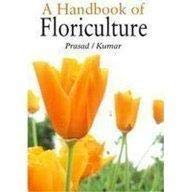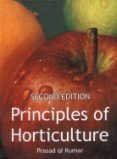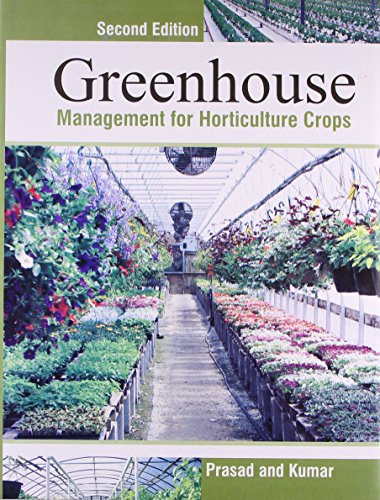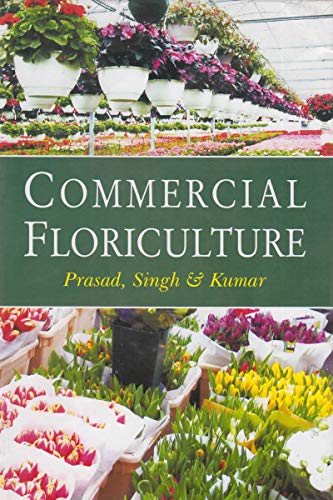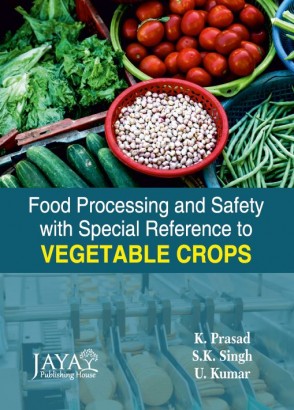S Prasad and U Kumar (10 results)
Product Type
- All Product Types
- Books (10)
- Magazines & Periodicals
- Comics
- Sheet Music
- Art, Prints & Posters
- Photographs
- Maps
-
Manuscripts &
Paper Collectibles
Condition
Binding
- All Bindings
- Hardcover (8)
- Softcover
Collectible Attributes
- First Edition
- Signed
- Dust Jacket
- Seller-Supplied Images (1)
- Not Printed On Demand
Free Shipping
Seller Location
Seller Rating
-
Illustrated Flora of Keoladeo National Park, Bharatpur, Rajasthan: A general guide to the wetland flora of the Gangetic plains
Published by Oxford University Press, USA, 1998
ISBN 10: 0195642279ISBN 13: 9780195642278
Seller: Ergodebooks, Houston, TX, U.S.A.
Book
Hardcover. Condition: Used: Good.
-
A Handbook of Floriculture
Published by Agrobios (India) Agrobios, 2010
ISBN 10: 8177544098ISBN 13: 9788177544091
Seller: Books Puddle, New York, NY, U.S.A.
Book
Condition: Used. pp. 630 1st Edition.
-
A Handbook of Floriculture
Published by Agrobios (India), 2010
ISBN 10: 8177544098ISBN 13: 9788177544091
Seller: Majestic Books, Hounslow, United Kingdom
Book
Condition: Used. pp. 630 Illus. (Partly Col.).
-
Principles of Horticulture
Published by Agrobios, Jodhpur, 2005
ISBN 10: 8177542389ISBN 13: 9788177542387
Seller: Vedams eBooks (P) Ltd, New Delhi, India
Book
Hardbound. Condition: As New. Reprint. Contents Preface. 1. History nature and scope of horticulture. 2. Divisions of horticulture. 3. Classifying and naming horticultural plants. 4. Climate and weather. 5. Soils environment and plant growth. 6. Plant water relations and management. 7. Growth and development of horticultural crops a physiological approach. 8. Stress physiology of horticultural crops. 9. Mineral nutrition and the inorganic fertilizer support. 10. Manures and biofertilizers for horticultural crops. 11. Methods of cultivation. 12. Methods of irrigation. 13. Soilless production of horticultural crops (water sand and gravel culture). 14. Greenhouse construction and related equipments. 15. Plant growth substances (physiological molecular and agricultural aspects). 16. Plant growth regulators methods of application and evaluation of responses. 17. Weed management principles and practices. 18. Mulches. 19. Diseases of horticultural crops. 20. Management of pests and soil organisms. 21. Synseeds or synthetic seeds. Appendix. Glossary. Now horticultural practices have drawn attention of a large section of scientists and planners at the global level. In the fast developing world every day there is an addition and literature on new cultural and farming techniques new cultivars new crops new products and new equipments. By studying the principles of horticulture one is able to learn how and why plants grow and develop. A horticulturist requires to know the latest cultural practices effects of responses of plants to various abiotic and biotic conditions. The present book is an attempt to provide overall information to the readers interested in various fundamentals and applied of horticulture. 646 pp.
-
Principles of Horticulture
Published by Agrobios, Jodhpur, 2008
ISBN 10: 8177542389ISBN 13: 9788177542387
Seller: Vedams eBooks (P) Ltd, New Delhi, India
Book
Hardbound. Condition: As New. Second Revised and enlarged edition. Contents Preface. 1. History nature and scope of horticulture. 2. Divisions of horticulture. 3. Classifying and naming horticultural plants. 4. Climate and weather. 5. Soils environment and plant growth. 6. Plant water relations and management. 7. Growth and development of horticultural crops a physiological approach. 8. Stress physiology of horticultural crops. 9. Mineral nutrition and the inorganic fertilizer support. 10. Manures and biofertilizers for horticultural crops. 11. Methods of cultivation. 12. Methods of irrigation. 13. Soilless production of horticultural crops (water sand and gravel culture). 14. Greenhouse construction and related equipments. 15. Plant growth substances (physiological molecular and agricultural aspects). 16. Plant growth regulators methods of application and evaluation of responses. 17. Weed management principles and practices. 18. Mulches. 19. Diseases of horticultural crops. 20. Management of pests and soil organisms. 21. Synseeds or synthetic seeds. Appendix. Glossary. Now horticultural practices have drawn attention of a large section of scientists and planners at the global level in the fast developing world every day there is an addition and literature on new cultural and farming techniques new cultivars new crops new products and new equipments. By studying the principles of horticulture one is able to learn how and why plants grow and develop. A horticulturist requires to know the latest cultural practices effects of responses of plants to various abiotic and biotic conditions. The present book is an attempt to provide overall information to the readers interested in various fundamentals and applied of horticulture. 646 pp.
-
Greenhouse Management for Horticultural Crops
Published by Agrobios, 2022
ISBN 10: 8177541242ISBN 13: 9788177541243
Seller: Vedams eBooks (P) Ltd, New Delhi, India
Book
Hardcover. Condition: New. 2nd Edition. Contents 1 Greenhouse An Artificial House For Plants 2 Types Of Greenhouses 3 Greenhouse Construction Related Aspects 4 Greenhouse Heating 5 Greenhouse Cooling 6 Root Media 7 Nutrient Solution For Growth Media 8 Mineral Nutrition And Fertilization For Greenhouse Crops 9 Technical Control Of The Nutrient Solution 10 Alternative Cropping Systems For Greenhouse 11 Carbon Dioxide Fertilization 12 Light And Temperature Management In Greenhouse 13 Various Types Of Soilless Culture General Aspects 14 Water Culture 15 Sand Culture 16 Gravel Culture 17 Technical Control Of The Plant Culture In Greenhouse 18 Plant Tissue Culture Technique For Developing Greenhouse Crops 19 Chemical Growth Regulation Of Greenhouse Crops 20 Pests And Soil Organisms Of Greenhouse Plants 21 Pest Management 22 Post Production Handling 23 Pesticide Application Equipment And Its Calibration 24 Greenhouse Plant Diseases And Their Control 25 Subject IndexA greenhouse is a framed or an inflated structure covered with a transparent or translucent material in which crops could be grown under the condition of at least partially controlled environment and which is large enough to permit persons to work within it to carry out cultural operations The Floriculture industry especially cut-flower industry has its major role in the development of greenhouse industry in worldWe feel pleasure to present Second Edition of the book Several improvements have been made from the previous edition The present book includes chapter like Greenhouse An Artificial House for Plants Types of Greenhouses Greenhouse Construction Related Aspects Greenhouse Heating Greenhouse Cooling Root Media Nutrient Solution for Growth Media Mineral Nutrition and Fertilization for Greenhouse Crops Technical Control of the Nutrient Solution Alternative Cropping Systems for Greenhouse Carbon Dioxide Fertilization Light and Temperature Management in Greenhouse Various Types of Soilless Culture General Aspects Water Culture Sand Culture Gravel Culture Technical Control of the Plant Culture in Greenhouse Plant Tissue Culture Technique for Developing Greenhouse Crops Chemical Growth Regulation of Greenhouse Crops Pests and Soil Organisms of Greenhouse Plants Pest Management Post Production Handling Pesticide Application Equipment and its Calibration d Greenhouse Plant Diseases and Their Control 476 pp.
-
A Handbook of Floriculture
Published by Agrobios, 2010
Seller: Vedams eBooks (P) Ltd, New Delhi, India
figs (illustrator). Contents 1 Flower a greener vision 2 World scenario of floriculture 3 The flower 4 Principles and systems of classification of flowering plants 5 Control of flowering 6 Vernalization promoting flowering with cold temperature 7 Requirements for commercial flower production 8 Greenhouse an artificial house for plants 9 Plant tissue culture principles and methodology 10 Economic considerations of plants produced through tissue culture 11 Plant growth regulators and flowering 12 Hydroponics 13 Selection of flower crop 14 Cultural practices 15 Bedding plants production for floriculture 16 Cut flower crops 17 Other flower crops 18 Dry flower production 19 Arrangement and composition of flowers Appendices The floral industry is one of the major industries in many developing and underdeveloped countries Floriculture as an industry began in the late 1800s in England where flowers were grown on a large scale on the vast estates The floral industry essentially consists of three major components the growers the wholesalers and the retailers whose businesses are quite intermingled The recent trends are more towards eliminating the intermediaries the wholesalers between the growers and the retailers so that the flowers are made available at considerably low prices However the floral industry today has grown too much larger proportions and offers a wide scope for growth and profits All commercially important plants cultivated flowers have been described Informatory chapters on the floriculture industry including soil and climate manures and fertilizers plant propagation seed production greenhouses and post harvest management have also been included The book has been written for the benefit and to prove an asset and a handy reference guide in the hands of students teachers researchers new entrepreneurs and well established industrialists 632 pp.
-
Commercial Floriculture (2nd Ed.)
Published by Agrobios (India), 2022
ISBN 10: 8177543733ISBN 13: 9788177543735
Seller: Vedams eBooks (P) Ltd, New Delhi, India
Book
Hardcover. Condition: New. 2nd Edition. Floriculture is one of the branches of agriculture. Indian commercial flower industry has the potential to become the leading flower industry of Floriculture Worldwide. This Specialized food and ornamental plant production business are grouped together in the known as horticulture. Ornamental horticulture more appropriately of flower and ornamental plant production and Landscaping. This book deals with cultivation, marketing and arranging of flowers and foliage plants. The present book has been designed to meet out the requirements of a commercial flower grower that includes production of cut flowers, foliage potted plants, bedding plant and growing and forcing bulbs and corms of flowering plants for wholesale and retail sales. The floriculture industry has become highly specialized as the floriculturist has to use many manipulative devices to see that there is a steady supply of flowers and foliage plants irrespective of seasons and minimum loss to the industry because of perishable nature of flowers.
-
Food Processing and Safety with Special Reference to Vegetable Crops
Published by Jaya Publishing House, 2022
ISBN 10: 9392851847ISBN 13: 9789392851841
Seller: Vedams eBooks (P) Ltd, New Delhi, India
Book
Hardcover. Condition: New. Contents: 1. Postharvest technology of vegetable crops: academics, research and employment opportunities in India 2. Present status and future prospects of food and vegetable preservation industry in India 3. Principles, methods and history of food preservation 4. Primary and minimal processing in food and vegetable processing industry 5. Value addition concept 6. Sensory evaluation of fresh, processed food and vegetable product 7. Labelling and labelling acts for food and vegetable products 8. Nutritional labelling for food and vegetable products 9. Role of microbes in food and vegetable preservation 10. Spoilage of food and vegetable products: factors, characteristics and storage condition 11. Food poisoning and its control measures 12. Processing, raw materials for processing and processing equipment 13. Establishment of processing industry 14. By-product utilization and waste management of vegetable processing industry 15. Investment analysis 16. Good manufacturing and hygienic practices in food/vegetable processing center 17. Total quality management in food/vegetable processing sector 18. Food standards 19. Food laws and regulation 20. FPO license 21. Quality assurance and quality control 22. Food safety 23. Importance of hygiene and plant sanitation 24. Cleaning and sanitation in food processing industry 25. Codex Alimentarius Commission (CAC) and International Organization for Standardization (ISO) 26. HACCP: Hazard Analysis and Critical Control Point.
-
A Handbook of Fruit Production
Published by Agrobios, 2010
Seller: Vedams eBooks (P) Ltd, New Delhi, India
78 col. plates, 196 b/w figs (illustrator). Contents I Principles of fruit production 1 The fruit 2 Origin cultivation and status of fruit crops 3 Fruit growing areas and varieties in India 4 Fruit set and ripening 5 Chemical composition and nutritional value of fruits 6 Fruit cultivation soils environment 7 Fruit cultivation tillage and tillage operations 8 Fruit cultivation water relations 9 Fruit cultivation water management and irrigation 10 Nursery practices 11 Propagation through seeds 12 Propagation through cuttings 13 Propagation through layering 14 Propagation through grafting 15 Propagation through budding 16 Weed control of fruit crops 17 Diseases of fruit crops 18 Fruit cultivation pruning 19 Organic fruit production 20 Postharvest aspects of fruit crops 21 Fruit biotechnology II Fruit cultivation 1 Aonla 2 Apple 3 Apricot 4 Avocado 5 Bael Bengal Quince 6 Banana and plantain 7 Ber 8 Carambola 9 Cherry 10 Date palm 11 Durian 12 Egg fruit 13 Fig 14 Grape 15 Guava 16 Jackfruit 17 Jamun 18 Karonda 19 Kiwi 20 Limes and lemons 21 Litchi 22 Loquat 23 Macadamia 24 Mandarin orange 25 Mango 26 Mangosteen 27 Olive 28 Papaya 29 Passion fruit 30 Peach 31 Pear 32 Pecan 33 Phalsa 34 Pineapple 35 Plum 36 Pomegranate 37 Rambutan 38 Sapota 39 Strawberry III Appendix 1 Improved varieties of fruits 2 Common and botanical names Glossary References Subject index The nature is given to India diverse geographical soil and agro-climate conditions in varies region Thus it is possible to grow various kinds of fruits in the different states of India The climate ranges from typical tropics in Kerala to extreme temperate in the high hills of Kashmir Himachal UP Arunachal Pradesh and Meghalaya Similarly Meghalaya get the highest rainfall in the world and Rajasthan get very little rain It is therefore possible to grow tropical sub-tropical and temperate fruits in the different regions Present book has been designed to provide overall information of principles of fruit production and cultivation of individual important fruits cultivated in India 956 pp.



